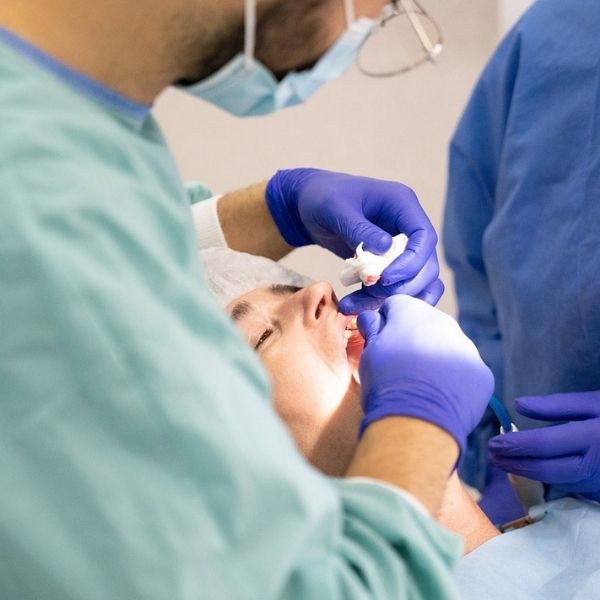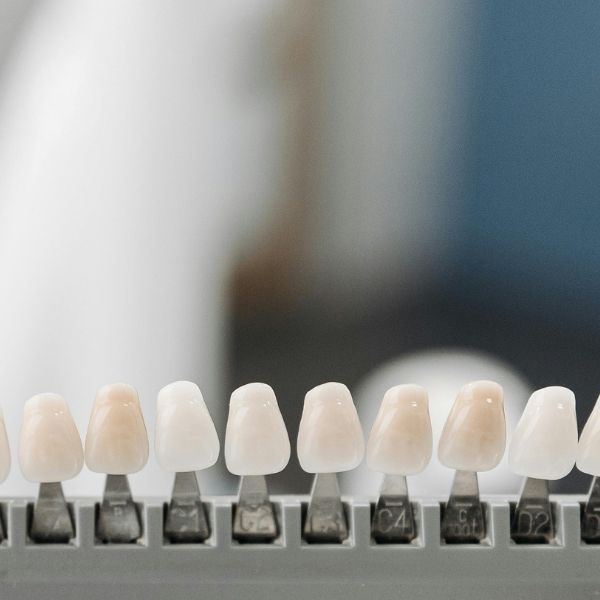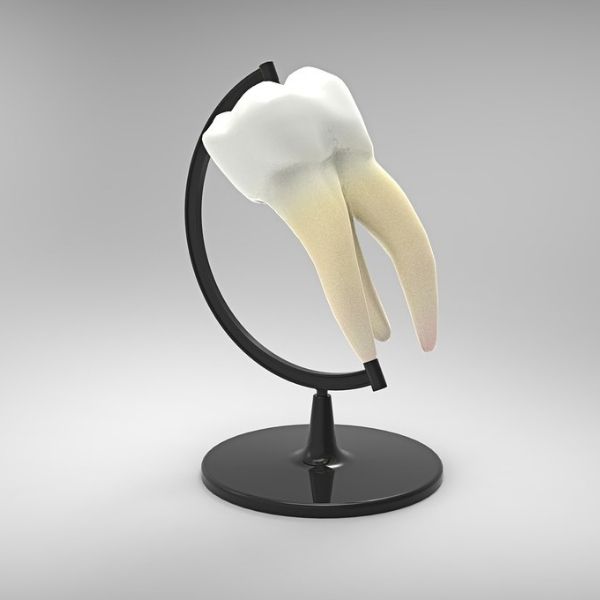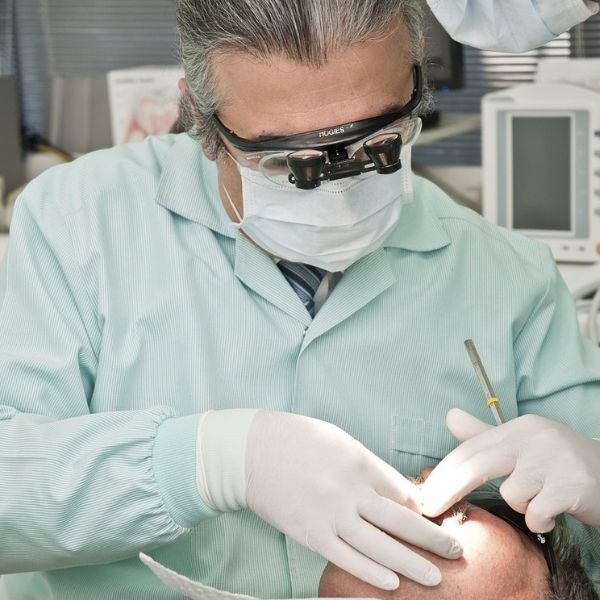When it comes to maintaining your dental implants, it’s essential to follow a proper care routine. In this guide to cleaning dental implants, we’ll explore how to keep your implants clean, why it’s important, and what specific steps you should take to ensure the longevity of your dental restoration. Dental implants are a long-lasting solution for replacing missing teeth, but their success heavily depends on your daily hygiene practices. Without proper care, even dental implants can be susceptible to gum disease or other complications.
This guide to cleaning dental implants will cover everything you need to know, including daily cleaning routines, recommended tools, and the importance of professional cleanings.
Why Is Cleaning Dental Implants Important?
Before diving into the steps for cleaning, let’s understand why this guide to cleaning dental implants is so crucial. Dental implants are designed to integrate with your jawbone, acting as a sturdy foundation for artificial teeth. However, while the implant itself is made of biocompatible materials like titanium that won’t decay, the surrounding gum tissue and bone can still be affected by plaque and bacteria buildup.
Without proper cleaning, you run the risk of developing peri-implantitis, an infection that can lead to bone loss around the implant. Just like gum disease affects natural teeth, peri-implantitis can result in implant failure. Therefore, following this guide to cleaning dental implants is vital for protecting both the health of your gums and the stability of your implant.
Daily Cleaning Routine for Dental Implants
This guide to cleaning dental implants emphasizes the importance of a consistent, thorough daily cleaning routine. Dental implants require the same, if not more, attention as natural teeth because plaque and food particles can still accumulate around the implant site. Here’s how to maintain a good cleaning routine.
Brush Your Teeth Twice a Day
The first and most important part of your daily routine outlined in this guide to cleaning dental implants is brushing your teeth at least twice a day. Use a soft-bristled toothbrush to avoid irritating the gums and damaging the implant’s surface. Whether you prefer a manual or electric toothbrush, it’s important to ensure all surfaces of your teeth and implants are cleaned, particularly around the gum line.
- Choose the right toothpaste: Select a non-abrasive toothpaste that won’t scratch the surface of your dental implants. Many whitening or tartar-control toothpastes can be too harsh.
- Brush thoroughly: Spend at least two minutes brushing, focusing on the areas where the implant crown meets the gum. Use gentle circular motions to clean effectively without causing damage.
This step is crucial in this guide to cleaning dental implants, as regular brushing removes plaque that can otherwise cause inflammation and infection around your implants.
Floss Daily
Flossing is the next essential step in this guide to cleaning dental implants. Flossing helps remove plaque and debris from between teeth and around implants where your toothbrush can’t reach. Flossing prevents bacteria buildup that could lead to infections, especially around the implant site.
- Choose the right floss: Use implant-specific floss or a waxed floss that glides easily around the implant.
- Be gentle: Slide the floss between your teeth and curve it around the implant base. Be sure to move it gently back and forth to remove any plaque.
Flossing, as recommended in this guide to cleaning dental implants, prevents bacterial buildup and protects both your natural teeth and your implants from potential gum problems.
Use an Interdental Brush
As this guide to cleaning dental implants suggests, using an interdental brush is a highly effective way to clean the hard-to-reach areas between teeth and around the implants. These small brushes are designed to reach spaces that regular toothbrushes and floss can’t.
- Pick the correct size: The brush should fit comfortably between your teeth without causing discomfort. It should be stiff enough to remove plaque but soft enough not to damage the gums.
- Use the brush gently: Move it back and forth between your teeth and implants to dislodge any trapped food particles or plaque.
Interdental brushes are an important tool recommended by this guide to cleaning dental implants to ensure thorough cleaning of tight spaces.
Rinse with Antibacterial Mouthwash
In this guide to cleaning dental implants, we recommend rinsing with an antibacterial mouthwash as part of your daily routine. Mouthwash helps reduce bacteria and prevent infections like peri-implantitis.
- Choose alcohol-free: Select a non-alcoholic mouthwash to avoid drying out your mouth or irritating your gums.
- Rinse for at least 30 seconds: Swish the mouthwash around your mouth, focusing on the implant area.
This step helps maintain overall oral health and ensures your implants remain clean and free from harmful bacteria.
Regular Professional Cleanings
In this guide to cleaning dental implants, professional cleanings are just as important as your at-home care routine. Even with meticulous daily cleaning, plaque can build up in areas you can’t reach. Visiting your dentist or hygienist regularly ensures your implants and surrounding gums stay healthy.
Visit Your Dentist Every Six Months
Regular dental cleanings are crucial to the long-term success of your implants. During these appointments, your dentist will thoroughly clean around your implants, removing any plaque or tartar buildup.
- Check for issues: Your dentist will also check for early signs of peri-implantitis or other problems during these visits.
- Use specialized tools: Dentists often use special instruments to clean implants without damaging them.
Following this guide to cleaning dental implants means not skipping professional cleanings, as they are essential for keeping your implants healthy.
Professional Tools for Cleaning
Dental professionals use special tools designed for cleaning around implants. These tools help remove debris and bacteria without scratching or damaging the surface of the implant. Professional cleaning is an important part of this guide to cleaning dental implants to prevent long-term issues like implant failure.
Additional Tips for Cleaning Dental Implants
This guide to cleaning dental implants wouldn’t be complete without some additional tips to help you maintain your oral health:
- Consider a water flosser: Water flossers are another excellent tool for cleaning around dental implants. They use water pressure to remove food particles and plaque from between your teeth and implants.
- Be mindful of your diet: Avoid excessively hard or sticky foods that could put undue pressure on your dental implants.
- Stay hydrated: Drinking plenty of water throughout the day helps flush out bacteria and keeps your gums healthy.
Signs You Need to Improve Your Cleaning Routine
Even if you’re following this guide to cleaning dental implants, it’s important to watch for signs that may indicate you need to improve your routine. Here are a few symptoms to look out for:
- Bleeding gums: If your gums bleed when brushing or flossing, this could be a sign of infection or inflammation around your implant.
- Persistent bad breath: Bad breath that won’t go away may indicate bacteria buildup around your implant.
- Redness or swelling: Swollen or red gums around the implant could signal an early infection.
If you notice any of these symptoms, consult your dentist immediately for advice on how to improve your cleaning regimen.
In conclusion, this guide to cleaning dental implants provides all the information you need to maintain your implants and keep them in excellent condition. By brushing, flossing, using interdental brushes, and rinsing with mouthwash, you can prevent bacterial buildup and ensure the longevity of your implants. Don’t forget the importance of regular professional cleanings as part of your implant care routine. With the proper care and attention, dental implants can last for many years, providing a healthy, confident smile.





